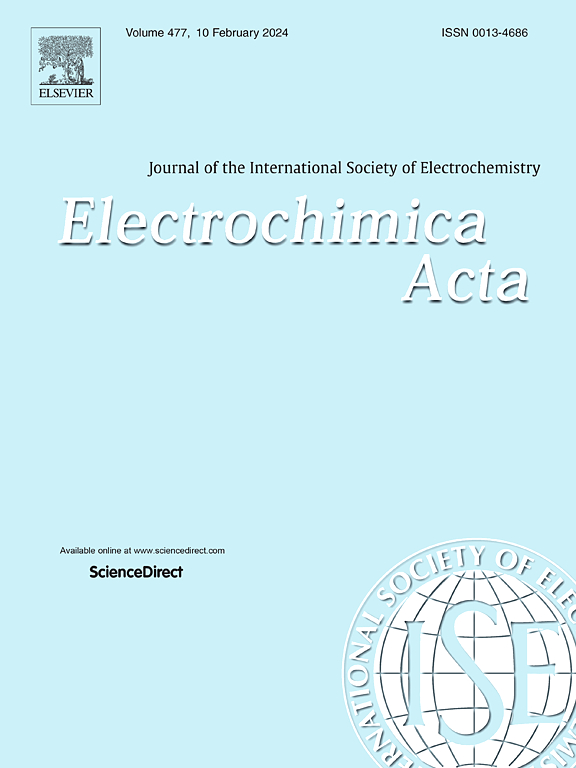通过 TiO2/g-C3N4 纳米复合光阳极改善电荷载流子管理,提高染料敏化太阳能电池的光伏性能
IF 5.5
3区 材料科学
Q1 ELECTROCHEMISTRY
引用次数: 0
摘要
本研究探讨了通过加入由尿素合成的二维氮化石墨碳(g-C3N4)来改性多孔二氧化钛光阳极,从而提高染料敏化太阳能电池(DSSC)的性能。宽带隙 TiO2 与窄带隙 g-C₃N₄ 的结合将 TiO2 异质结构复合材料的光学响应范围从紫外光扩展到了可见光。在 TiO2 中引入 g-C3N4 形成异质结,可以最大限度地减少光阳极-电解质界面的电荷重组,从而显著提高器件的光伏性能。优化 g-C3N4 负载后,峰值功率转换效率 (PCE) 达到 10.79%,比基于原始 TiO2 的器件提高了 42%,令人印象深刻。这种提高主要归功于 g-C3N4 和 TiO2 之间的 II 型带排列促进了光生电荷载流子的有效分离。这种对准通过有利的导带和价带偏移得以实现,加速了光生载流子的分离,延长了电子寿命。本文章由计算机程序翻译,如有差异,请以英文原文为准。
Enhancing photovoltaic performance of dye-sensitized solar cells through TiO2/g-C3N4 nanocomposite photoanodes for improved charge carrier management
This study explores the enhancement of dye-sensitized solar cells (DSSCs) through the modification of porous TiO2 photoanodes by incorporating two-dimensional graphitic carbon nitride (g-C3N4) synthesized from urea. The combination of wide-bandgap TiO2 with narrow-bandgap g-C₃N₄ extends the optical response range of the TiO2 heterostructure composites from ultraviolet to visible light. The introduction of g-C3N4 with TiO2 to form a heterojunction significantly boosts the photovoltaic performance of the device by minimizing charge recombination at the photoanode-electrolyte interface. Upon optimizing the g-C3N4 loading, a peak power conversion efficiency (PCE) of 10.79 % is achieved, representing an impressive 42 % improvement over the pristine TiO2-based device. This enhancement is primarily attributed to the efficient separation of photogenerated charge carriers, facilitated by the type II band alignment between g-C3N4 and TiO2. This alignment, enabled by favorable conduction and valence band offsets, accelerates the separation of photogenerated carriers and prolongs electron lifetime.
求助全文
通过发布文献求助,成功后即可免费获取论文全文。
去求助
来源期刊

Electrochimica Acta
工程技术-电化学
CiteScore
11.30
自引率
6.10%
发文量
1634
审稿时长
41 days
期刊介绍:
Electrochimica Acta is an international journal. It is intended for the publication of both original work and reviews in the field of electrochemistry. Electrochemistry should be interpreted to mean any of the research fields covered by the Divisions of the International Society of Electrochemistry listed below, as well as emerging scientific domains covered by ISE New Topics Committee.
 求助内容:
求助内容: 应助结果提醒方式:
应助结果提醒方式:


